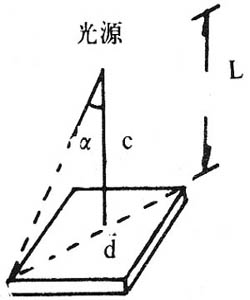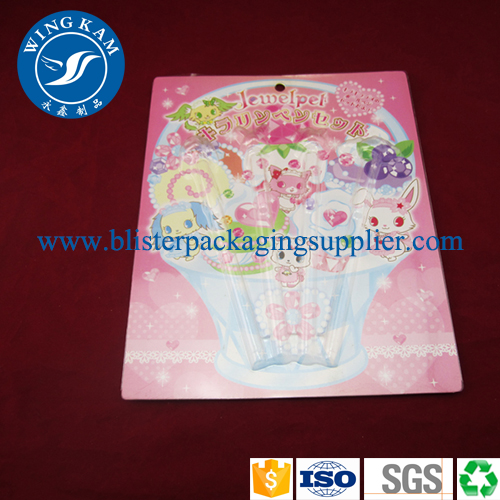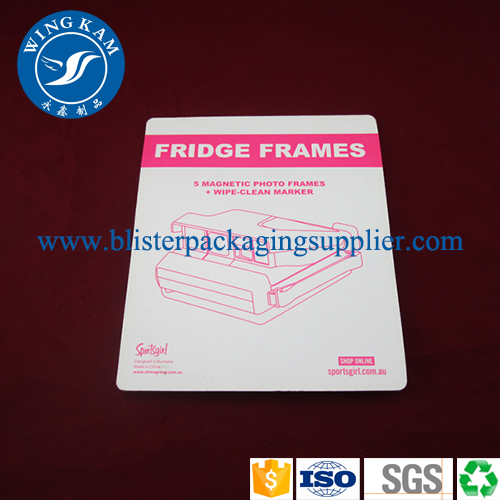d) Drying of the photosensitive film. Coating and drying the photosensitive film works best under yellow light. As mentioned earlier, using hot air to dry the sensitization, the most important thing is to pay attention to the temperature.
Sensitive emulsions have low sensitivity in the liquid phase, and the sensitivity rises with the drying of the coating film. After the film is completely dried, it can reach the specified sensitivity. Therefore, it should be fully dried before printing, and should be completed within a short time after drying. Shaiban. There are many examples of drying failure due to insufficient drying.
If there is dust on the film surface during drying, pinholes will also be generated. Therefore, during the dry operation time of the film surface, care must be taken not to get dust.
c.
After the photosensitive film is completely dried, it should be printed as soon as possible. When the printing plate is printed, the positive film surface of the positive plate should be tightly sealed on the surface of the photosensitive film.
The primer should be further examined before exposure. In the blank part of the bottom plate, the higher the transparency, the better. When the transparency is high, the light flux is large, the photoresist is completely cured, the image after the development is clear, and the edges are neat.
Exposure should be done in a special screen printer. Stencils are the main equipment for making high-quality silk screens.
The pattern made up of thick lines or blocks can be printed in daylight or in a self-made simple printing plate.
When printing a pattern composed of fine strips or dots, it is necessary to use a special screen-printing machine with a vacuum suction device and a selected light source.
The most important section in the exposure is the close attachment of the screen frame and the bottom plate. The contact between the screen and the bottom plate is not true, and the figure that is drying out will certainly be imaginary. When it is serious, it will be completely scrapped. In this sense, the printing machine with vacuum suction device will be the best choice for users.
The light source used for printing is generally arc lamps. In addition, high-pressure mercury lamps, halogen lamps, and xenon lamps are also used, as well as ordinary incandescent lamps and fluorescent lamps. Regardless of the kind of light, it must be done so that the photosensitive film can be hardened. The most ideal light source is a light source that emits wavelengths from ultraviolet to cyan.
Before printing, you must identify the front and back of the positive film. The positive film should be checked for stains or dust on the surface of the screen and the surface of the platen glass. Then, the positive film and the stretched frame plate are packed in the printing frame, and then the glass surface is checked once. If the positive image is placed on the correct position of the frame, it can be energized and exposed.
The most important part of the printing process is the exposure conditions. If the exposure conditions are not good, the printing will fail.
Exposure is the key process from quantitative change to qualitative change, resulting in a leap. Shaiban is a very important part of the plate making process. The quality of platemaking often depends on factors such as the light source, the distance between the photoreceptor surface and the light source, and the exposure time.
Exposure conditions are determined according to the type of emulsion, the thickness of the coating, the light source and the type, the distance from the light source to the film surface, and the light time. To do this, you should perform trial drying in advance to find suitable data and perform actual operations based on the data.
a) The distance between the light source and the photosensitive surface. The distance between the light source and the surface of the photoreceptor is an important condition for printing. To determine the distance, consider the light source intensity and other factors. Under normal circumstances, if the light source and the surface of the photoreceptor are small, it will cause excessive exposure in the middle of the plate, and the exposure of the center of the plate and the edge of the plate will be uneven. Conversely, if the distance between the light source and the surface of the photoreceptor is too large, underexposure or vignette may occur. Therefore, it is easy to see that there is a close relationship between the distance between the light source and the photoreceptor surface.
If the positive figure is a square, the diagonal line is D. If it is a circle, the diameter is D, and if the distance between the light source and the exposure surface is F, it should be at least at a distance of more than one and a half times the diagonal or diameter of the positive film. light source.
If it is a tubular fluorescent lamp, the distance between the light source and the photosensitive surface can be closer. If F≥1.5D relational expression is used to determine the distance between the light source and the surface of the photosensitive body, the relationship between the two can be better grasped to avoid overexposure or underexposure.
As shown in Figure 2-115, the lamp distance L depends on the allowable difference between the picture size and the picture illuminance. The large picture allows the difference in illumination of the bucket to be small, L should be large; otherwise it is small. The allowable illuminance difference during silk screen printing is 10%, which can determine the relationship between the drawing surface and L. In Figure 2-115, d is the length of the image facing the corner line. C is the central illumination of the drawing, and α is the angle between the direct illumination and the oblique illumination of the corner of the drawing. The illuminance at the corner of the drawing is
c·10/100=(1-cosa)
Therefore, α=25°50′31′′, so L=d, that is, the lamp distance is equal to the length of the figure when facing the corner line, and it can meet the requirement of evenness of the printing plate contrast.

Figure 2-115 Relationship between lamp pitch, drawing size, and illuminance difference
b) Light source, exposure time and distance. The light source and the photosensitive film and the exposure time, the requirements of the material and the requirements of the light source used in the printing machine. Under normal circumstances, if the light source is placed at a distance of 50 cm and the exposure time is 3 minutes, if the distance is 2 times, ie 100 cm, the exposure time should be 12 minutes, which is four times the original. However, it is actually 9 minutes, which is 3 times the original number. Exposure time and the distance from the light source to the photoreceptor surface, as well as the light source illumination intensity and plate-making quality also have a close relationship. Under normal circumstances, when the distance between the light source and the surface of the photoreceptor is fixed, the higher the irradiation intensity of the light source, the shorter the exposure time, the lower the illumination intensity of the light source, and the longer the exposure time. If the illumination intensity of the light source is constant, the longer the distance from the light source to the photoreceptor surface, the longer the exposure time, and vice versa, the shorter the exposure time.
In the actual plate making, the distance from the light source to the surface of the photoconductor is determined according to the light source, photosensitive material, etc. used to determine a reasonable exposure time.
c) How to irradiate light. The light should be parallel rays perpendicular to the photosensitive surface. If daylight is used, the screen should be placed directly in the sun, but not all the light from time to time. At the same time, the light changes strongly due to the seasons.
When using a point light source such as an arc, the exposure time can be prolonged, and it is preferable that the distance be longer than the permitted condition.
The worst is cross light from different angles. In this case, a glass of frost can be placed between the light source and the photosensitive surface to diffuse the light and the light source conditions can be improved.
1. Save raw materials ,light weight, easy to transport ,the Slide Card Blister Packaging is good sealing performance, in line with the requirements of environmental protection green packaging ;
2. The Slide Card Blister Packaging is able to packaging any abnormity product ,without using the buffer material ;
3. Be transparent packaging products ,beautiful appearance, easy to sales, and the Slide Card Blister Packaging is suitable for mechanized automatic packaging ,with modern management ,save manpower and improve efficiency .
4. In the process of Slide Card Blister Packaging commonly used materials : PP, PET ,PVC,PE etc.
In addition to slide card blister backaging,we also supply disposable blister box,clear plastic clamshell blister pack.


Slide Card Blister Packaging
Slide Card Blister Packaging,Pet Slide Card Packaging,Pvc Slide Card Packaging,Usb Slide Card Packaging
Shenzhen City Wing Kam Packaging Products Co., Ltd. , http://www.blisterpackagingsupplier.com